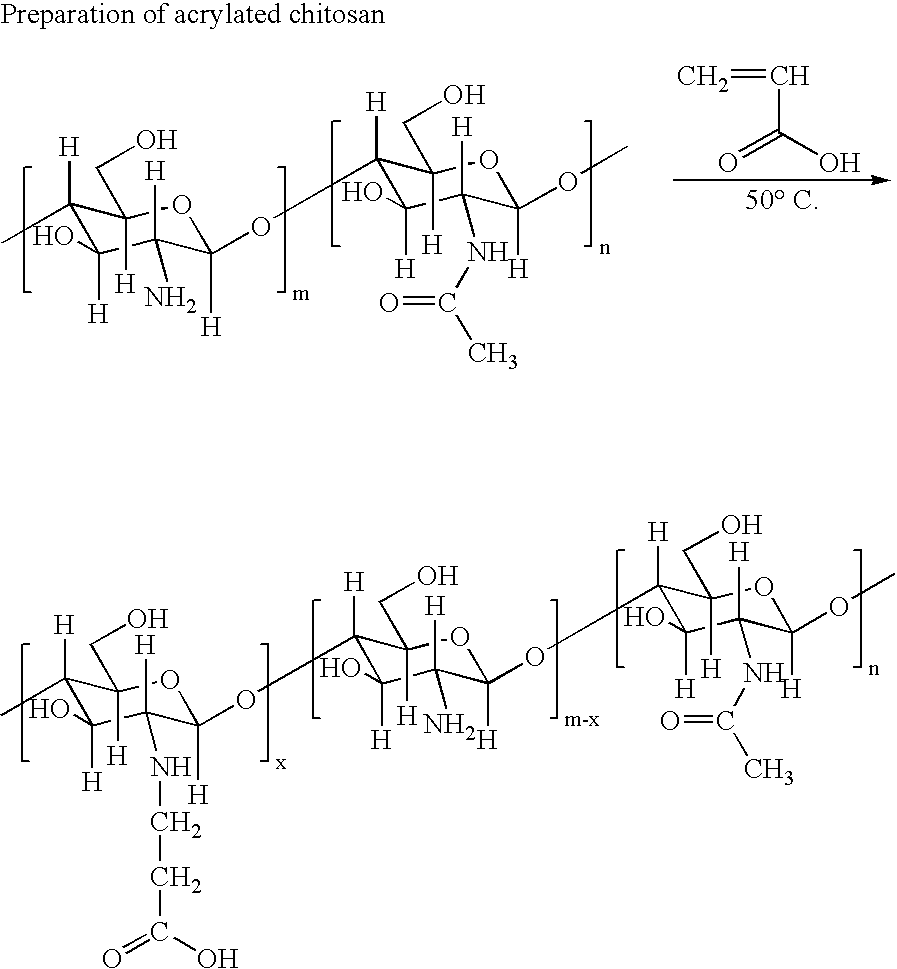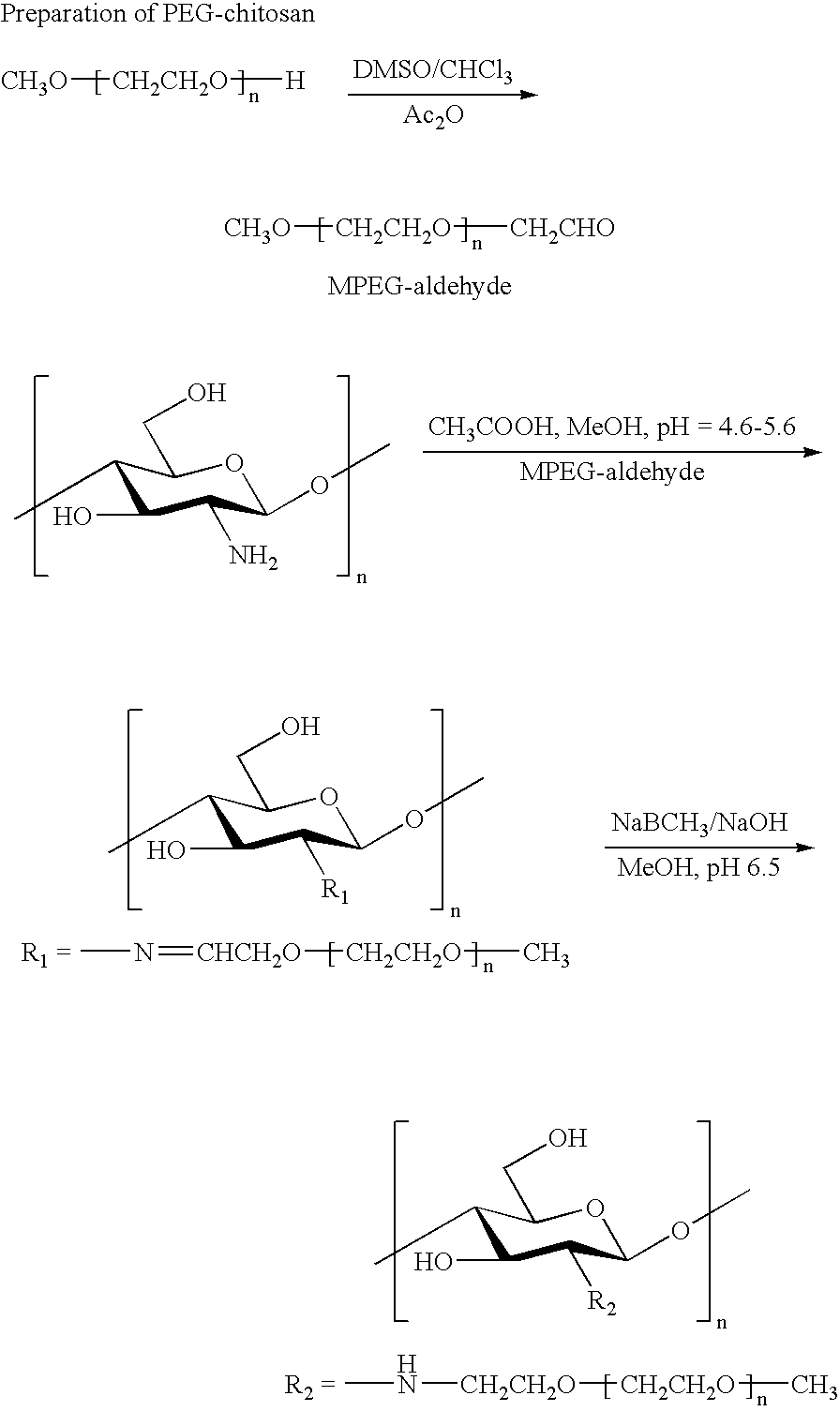Biopolymer system for tissue sealing
- Summary
- Abstract
- Description
- Claims
- Application Information
AI Technical Summary
Benefits of technology
Problems solved by technology
Method used
Image
Examples
example 1
[0100]
[0101] 5.52 ml of acrylic acid was dissolved in 150 ml of double distilled water and 3 g of chitosan (Kraeber® 9012-76-4, molecular weight 200-600 kD) was added to it. The mixture was heated to 50 C. and vigorously stirred for 3 days. After removal of insoluble fragments by centrifugation, the product was collected and its pH was adjusted to 11 by adding NaOH solution. The mixture was dialyzed extensively to remove impurities.
example 2
[0102]
[0103] Monomethyl-PEG-aldehyde was prepared by the oxidation of Monomethyl-PEG (MPEG) with DMSO / acetic anhydride: 10 g of the dried MPEG was dissolved in anhydrous DMSO (30 ml) and chloroform (2 ml). Acetic anhydride (5 ml) was introduced into the solution and the mixture is stirred for 9 h at room temperature. The product was precipitated in 500 ml ethyl ether and filtered. Then the product was dissolved in chloroform and re-precipitated in ethyl ether twice and dried.
[0104] Chitosan (0.5 g, 3 mmol as monosaccharide residue containing 2.5 mmol amino groups, Kraeber 9012-76-4, molecular weight 200-600 kD) was dissolved in 2% aqueous acetic acid solution (20 ml) and methanol (10 ml). A 15 ml sample of MPEG-aldehyde (8 g, DC: 0.40) in aqueous solution was added into the chitosan solution and stirred for 1 h at room temperature. Then the pH of chitosan / MPEG-monoaldehyde solution was adjusted to 6.0-6.5 with aqueous 1 M NaOH solution and stirred for 2 h at room temperature. NaCNB...
example 3
Preparation of Oxidized Dextran
[0105] Dextran (5 g) was dissolved in 400 mL of distilled H2O, then 3.28 g of NaIO4 dissolved in 100 mL ddH2O was added. The mixture was stirred at 25° C. for 24 hrs. 10 ml of ethylene glycol was added to neutralize the unreacted periodate following by stirring at room temperature for an additional hour. The final product was dialyzed exhaustively for 3 days against doubly distilled H2O, then lyophilized to obtain a sample of pure oxidized dextran.
PUM
| Property | Measurement | Unit |
|---|---|---|
| Acidity | aaaaa | aaaaa |
| Therapeutic | aaaaa | aaaaa |
| Content | aaaaa | aaaaa |
Abstract
Description
Claims
Application Information
 Login to View More
Login to View More - R&D
- Intellectual Property
- Life Sciences
- Materials
- Tech Scout
- Unparalleled Data Quality
- Higher Quality Content
- 60% Fewer Hallucinations
Browse by: Latest US Patents, China's latest patents, Technical Efficacy Thesaurus, Application Domain, Technology Topic, Popular Technical Reports.
© 2025 PatSnap. All rights reserved.Legal|Privacy policy|Modern Slavery Act Transparency Statement|Sitemap|About US| Contact US: help@patsnap.com


